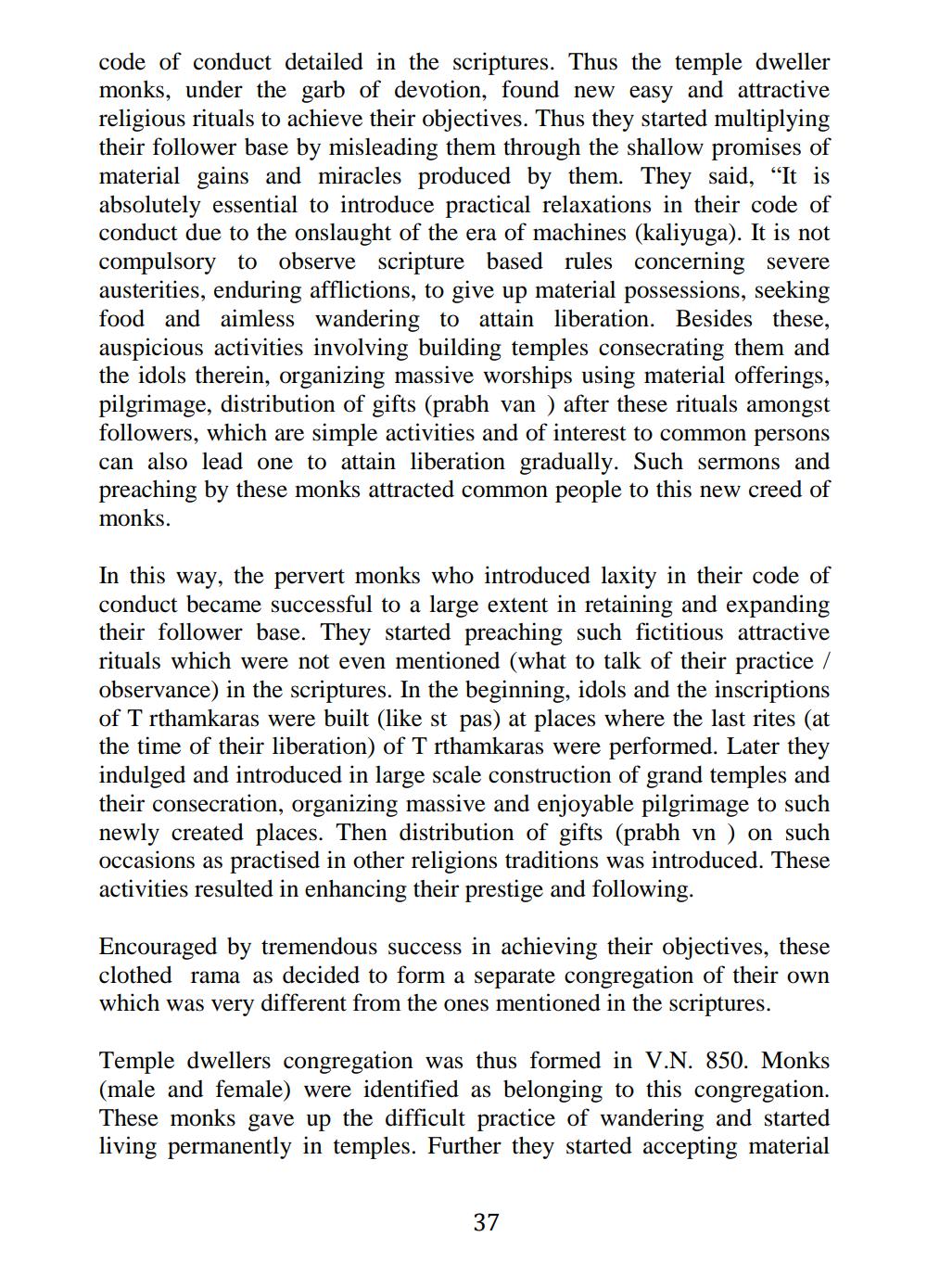________________
code of conduct detailed in the scriptures. Thus the temple dweller monks, under the garb of devotion, found new easy and attractive religious rituals to achieve their objectives. Thus they started multiplying their follower base by misleading them through the shallow promises of material gains and miracles produced by them. They said, "It is absolutely essential to introduce practical relaxations in their code of conduct due to the onslaught of the era of machines (kaliyuga). It is not compulsory to observe scripture based rules concerning severe austerities, enduring afflictions, to give up material possessions, seeking food and aimless wandering to attain liberation. Besides these, auspicious activities involving building temples consecrating them and the idols therein, organizing massive worships using material offerings, pilgrimage, distribution of gifts (prabh van) after these rituals amongst followers, which are simple activities and of interest to common persons can also lead one to attain liberation gradually. Such sermons and preaching by these monks attracted common people to this new creed of monks.
In this way, the pervert monks who introduced laxity in their code of conduct became successful to a large extent in retaining and expanding their follower base. They started preaching such fictitious attractive rituals which were not even mentioned (what to talk of their practice / observance) in the scriptures. In the beginning, idols and the inscriptions of T rthamkaras were built (like st pas) at places where the last rites (at the time of their liberation) of T rthamkaras were performed. Later they indulged and introduced in large scale construction of grand temples and their consecration, organizing massive and enjoyable pilgrimage to such newly created places. Then distribution of gifts (prabh vn) on such occasions as practised in other religions traditions was introduced. These activities resulted in enhancing their prestige and following.
Encouraged by tremendous success in achieving their objectives, these clothed rama as decided to form a separate congregation of their own which was very different from the ones mentioned in the scriptures.
Temple dwellers congregation was thus formed in V.N. 850. Monks (male and female) were identified as belonging to this congregation. These monks gave up the difficult practice of wandering and started living permanently in temples. Further they started accepting material
37




